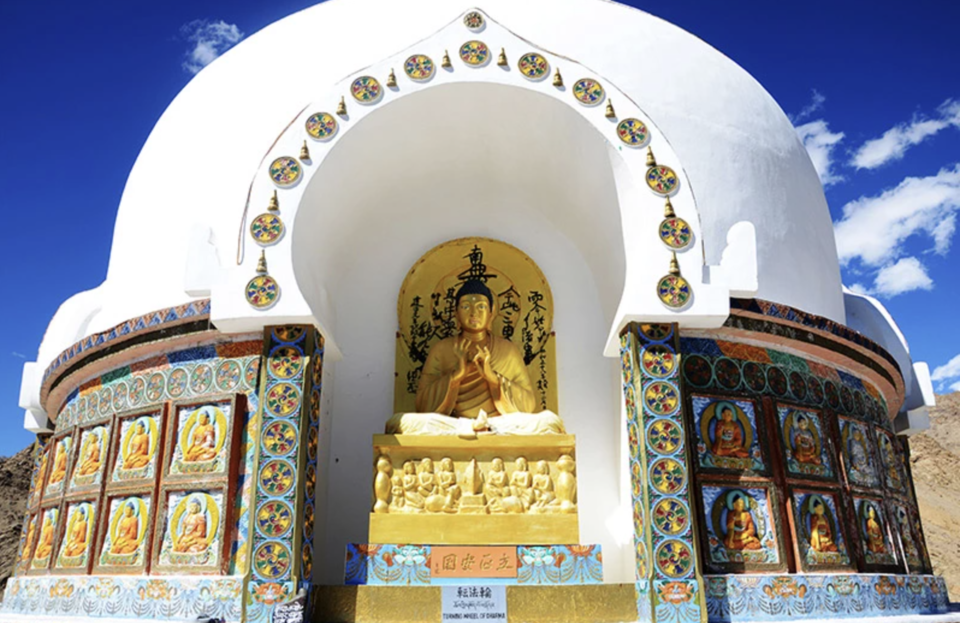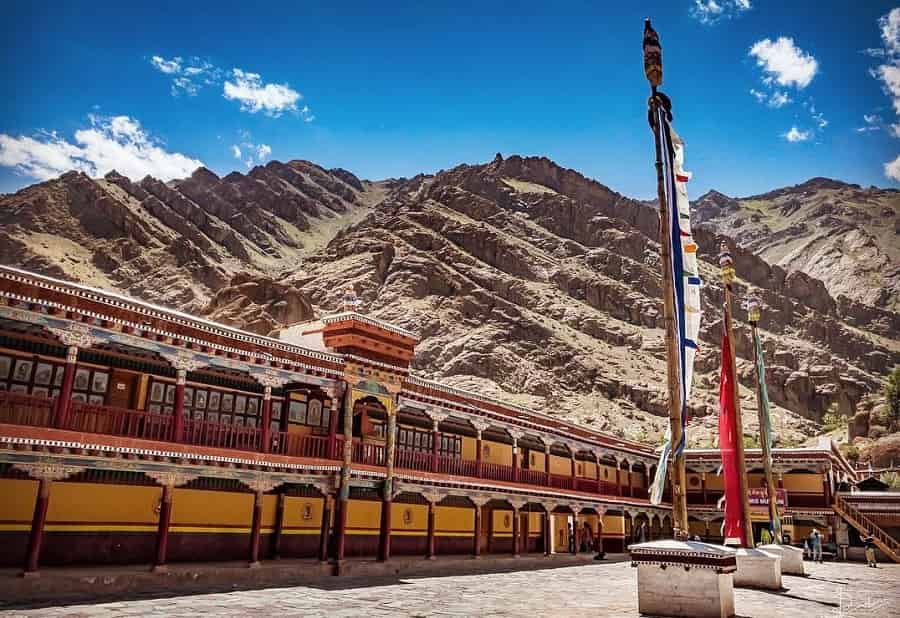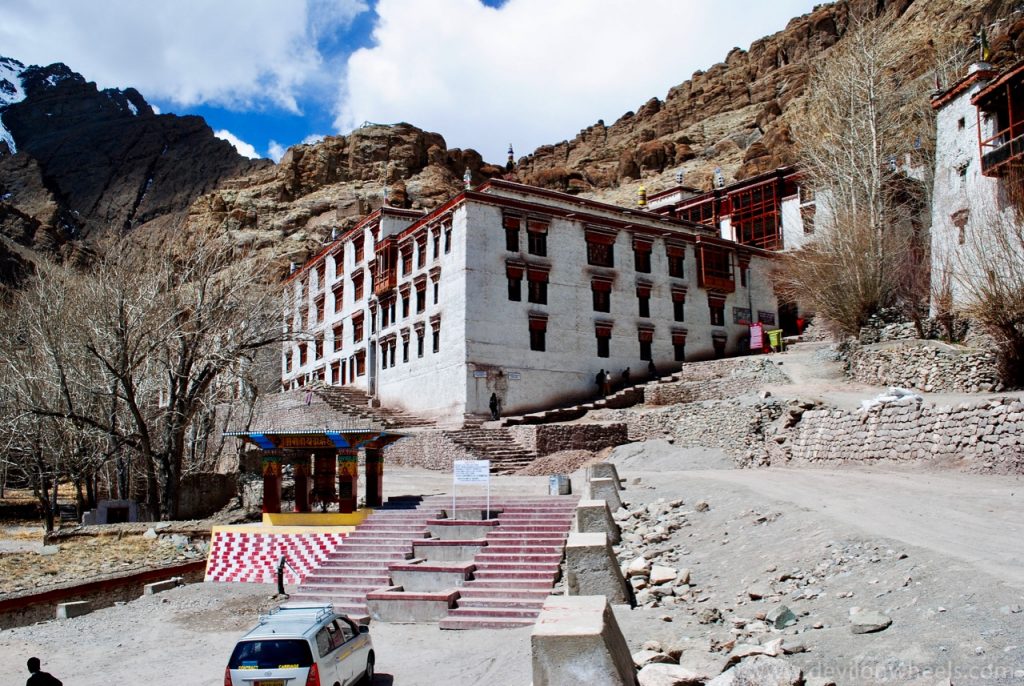Exploring Shanti Stupa and Hemis Monastery: Your Ultimate 2025 Guide to Ladakh's Spiritual Landmarks
views
Ladakh Like You’ve Never Seen Before
Imagine standing above the clouds, surrounded by towering snow-capped peaks, where the only sound is the mountain wind brushing against ancient stone. Welcome to Ladakh — the land of high passes and timeless monasteries, where every corner feels like a step into another world.
If you're planning a trip to Ladakh, you’ve probably already seen hundreds of pictures of winding roads, dramatic valleys, and adventure-filled itineraries. But there’s another side to Ladakh that’s quieter, deeply spiritual, and incredibly calming. It’s the side that lives in the monasteries, stupas, and sacred spaces scattered across this Himalayan wonderland.
Among them, the Shanti Stupa in Ladakh stands tall — literally and figuratively — as a symbol of peace, mindfulness, and unity. It’s not just a tourist spot; it’s an experience. And not far away, tucked in the serenity of the mountains, lies another gem: the Hemis Monastery, a spiritual powerhouse steeped in history and energy.
Let’s take a deep dive into why these places are must-visits in 2025, and how you can make the most of your journey.
The Shanti Stupa in Ladakh: Where Silence Speaks Louder Than Words
Let’s be honest — Ladakh’s landscape alone is enough to steal your breath away. But there's something about climbing the last few steps to the Shanti Stupa that makes you pause — even if you're not religious or spiritual.
The Shanti Stupa in Ladakh is perched on a steep hilltop overlooking Leh. White and round like a peaceful moon landed on Earth, this stupa isn’t just an architectural marvel — it feels like it holds the stillness of the entire valley.
Built to promote world peace and honor the teachings of the Buddha, the stupa has become one of Leh’s most iconic landmarks. But beyond the pretty Instagram shots, it offers something else: quiet clarity. Whether you’re here to meditate or simply breathe in the mountain air, the feeling is the same — calm, present, and grounded.
You don’t need to be Buddhist to appreciate this place. Sit down on one of the benches, take a moment, and just exist. For a lot of travelers, this becomes their favorite memory from Ladakh — not the thrill of riding over Khardung La, but the stillness of this sacred hill.
Getting There and What to Expect
The stupa is just 10–15 minutes from Leh’s main market by car or bike. If you're up for a small physical challenge, you can hike up the stairs — about 500 of them. It’s a bit of a leg workout (especially in high altitude), but the view at the top is totally worth it.
From the top, Leh stretches out below you. The mountains wrap around like an embrace, and during sunset or sunrise, the colors of the sky look like they were painted just for you.
Here’s what to know before you go:
-
Best Time to Visit: April to September for clear skies and easier access.
-
Entry Fee: None.
-
Ideal Time: Early morning or during sunset for fewer crowds and epic views.
-
What to Bring: A water bottle, warm layers, and a camera with enough battery.
Spiritual Vibes & Photography Goals
Besides the serene energy, the Shanti Stupa is also a dream location for photographers. Whether you’re into landscapes, portraits, or architecture, the lighting here makes everything glow. The contrast between the stupa’s pure white dome and the rugged browns of the mountains makes every picture pop.
Pro tip: Stay a little longer after sunset. The lights around the stupa come on, casting a soft golden glow — it’s magical and feels like you’re in a Studio Ghibli film.
Hemis Monastery in Ladakh: The Beating Heart of Himalayan Buddhism
Let’s shift gears from the minimalist calm of Shanti Stupa to the rich, colorful energy of another sacred site — the Hemis Monastery in Ladakh.
About 45 km from Leh, Hemis is the largest and arguably the most famous monastery in the region. But don’t expect a silent, deserted place. Hemis is alive — with chants, ceremonies, fluttering prayer flags, and walls that echo centuries of devotion.
Built deep within a quiet valley surrounded by dramatic cliffs, Hemis is more than just a religious site. It’s a celebration of Ladakhi culture, spirituality, and resilience. Every corridor, every statue, and every scroll inside whispers a story.
What Makes Hemis So Special?
-
Age & Importance: The monastery dates back to the 11th century and has been a major center for the Drukpa lineage of Tibetan Buddhism.
-
Architecture: Think courtyards, vivid wall paintings, huge statues, and old wood-carved doors. It’s like walking into a living museum.
-
The Library: If you’re a history or culture lover, the Hemis library is a treasure trove of ancient Tibetan texts and religious manuscripts.
-
Festivals: If you visit during the Hemis Festival in June, you’re in for a treat. It’s a riot of color, dance, and tradition. Monks perform masked dances, drums echo through the valley, and the entire monastery transforms into a stage.
Tips for Visiting Hemis Monastery
-
Distance from Leh: Around 45 km (takes about 1.5 hours by road).
-
When to Go: Anytime between May and October. But for the festival vibe, plan for early June.
-
Dress Code: Modest attire is appreciated. It’s a working monastery, so respect the space.
-
Don’t Miss: The large Buddha statue, the central courtyard, and the museum which houses fascinating artifacts.
Planning the Perfect Ladakh Itinerary (2025 Edition)
So now you’re probably wondering — how do I fit both these places into my itinerary?
Here’s a quick 3-day suggestion for a spiritually rich Ladakh experience:
Day 1: Arrival + Acclimatization in Leh
-
Check into your hotel, rest, and hydrate.
-
In the evening, visit the local market and grab some Ladakhi tea.
Day 2: Shanti Stupa + Leh Palace
-
Early morning visit to the Shanti Stupa for sunrise.
-
After breakfast, explore Leh Palace and Tsemo Gompa nearby.
-
End the day with a relaxed dinner overlooking the mountains.
Day 3: Day Trip to Hemis Monastery
-
Depart Leh early and visit Hemis Monastery.
-
On the way back, stop by Thiksey Monastery or Shey Palace.
-
Return by evening to Leh for a cozy, quiet night.
Final Thoughts: Ladakh Is More Than Just a Road Trip
For many, Ladakh means winding roads, dramatic passes, and thrilling adventures. But if you allow yourself to slow down — just a bit — you’ll discover a whole other dimension to this Himalayan gem.
The Shanti Stupa in Ladakh offers a chance to pause, reflect, and breathe. Meanwhile, the Hemis Monastery in Ladakh surrounds you with history, devotion, and culture. Together, they create a balance — peace and passion, silence and celebration.
So as you plan your 2025 trip to Ladakh, don’t just chase the thrill. Chase the stillness. That’s where the real magic happens.



Comments
0 comment